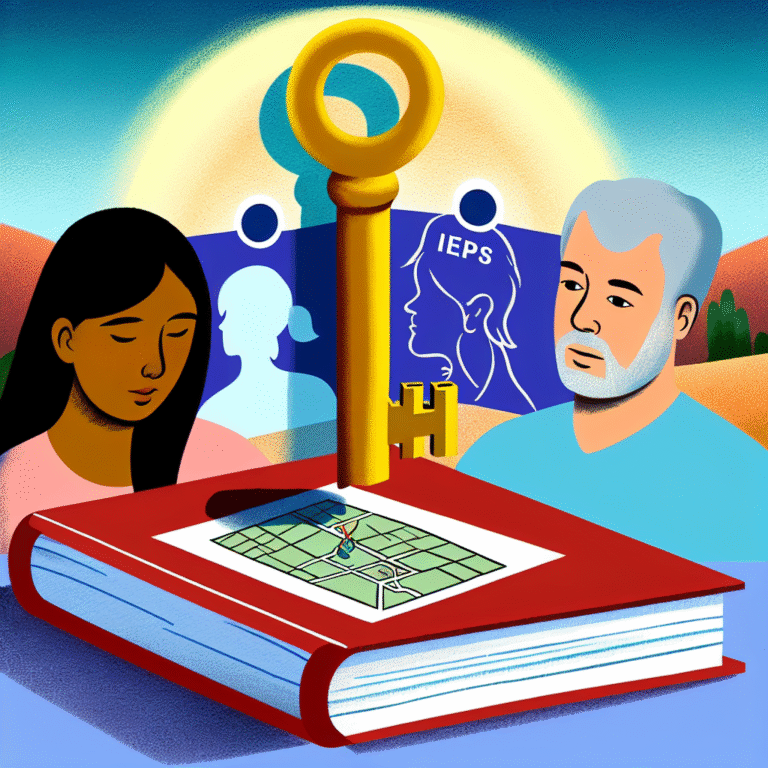Burnout Alert: How to Spot the Warning Signs and Recover Fast — The Ultimate Guide to Overcoming Exhaustion
Introduction
In today’s fast-paced world, the term "burnout" has become alarmingly common, yet many still underestimate its profound impact on our mental and physical well-being. Understanding the nuances of burnout is crucial to navigating life’s challenges and reclaiming your vitality. If you find yourself consistently feeling drained, indifferent, or overwhelmed, you must heed the Burnout Alert: How to Spot the Warning Signs and Recover Fast. This guide not only sheds light on the signs of burnout but also provides proven strategies for rapid recovery that will reinvigorate your life.
Understanding Burnout: The Basics
Burnout is not just a buzzword; it’s a recognized psychological syndrome that results from chronic workplace stress. According to the World Health Organization, it manifests through three primary dimensions:
- Emotional Exhaustion: Feeling drained or fatigued, often affecting your ability to stay focused.
- Depersonalization: Developing a cynical attitude towards your job and colleagues.
- Reduced Personal Accomplishment: A sense of ineffectiveness and lack of achievement in your work.
To tackle burnout effectively, it’s crucial to discern the early warning signs.
Early Warning Signs of Burnout
Recognizing the early indicators of burnout can dramatically alter your recovery trajectory. Here are some critical warning signs to watch out for:
1. Constant Fatigue
Table 1: Levels of Fatigue
| Level | Description | Potential Impact |
|---|---|---|
| Mild | Occasional tiredness | Decreased focus |
| Moderate | Frequent exhaustion | Reduced productivity |
| Severe | Persistent fatigue | Total burnout |
If you find that your batteries are perpetually low, it’s time to act. Ignoring this fatigue can exacerbate your state and lead to severe burnout.
2. Increased Cynicism
Feelings of detachment from your work can signal burnout. This cynicism often extends beyond the workplace, coloring your interactions and relationships. Noticing a shift in your outlook can be a Burnout Alert.
3. Declining Productivity
A drop in work performance often signals burnout. If you find tasks becoming increasingly daunting or if you’re missing deadlines frequently, it might indicate underlying burnout rather than just a heavy workload.
4. Health Issues
Burnout can present physical symptoms too, including headaches, gastrointestinal issues, and insomnia. The mind and body are intricately linked; stress can manifest in a myriad of tangible ways.
5. Emotional Instability
Persistent feelings of sadness, irritability, or anxiety can be red flags. If you’re finding it harder to manage your emotions, pay attention! This emotional volatility is a call for help.
Case Study: Emma’s Journey
Emma, a marketing executive, experienced the classic signs of burnout without realizing it. Constant fatigue and cynicism towards her projects gradually led her to seek help. After implementing several recovery strategies, including adjusting her work-life balance, Emma was able to reignite her passion for her job. Her journey encapsulates the importance of recognizing and addressing burnout early on.
Recovery Strategies: How to Bounce Back Fast
Now that you’ve identified the warning signs of burnout, let’s focus on effective recovery strategies. Here’s a multi-faceted approach for overcoming burnout swiftly:
1. Prioritize Self-Care
One of the most fundamental aspects of recovery is investing time in self-care. Simple practices such as regular exercise, adequate sleep, and nourishing meals can drastically improve your mental health.
Self-Care Checklist:
- Regular physical activity: Aim for 30 minutes of exercise, five times a week.
- Adequate sleep: Set a sleep schedule to ensure you’re getting 7–9 hours per night.
- Healthy diet: Incorporate whole foods and limit processed snacks.
2. Set Boundaries
Learning to say "no" is a powerful tool against burnout. Set clear boundaries to protect your time and energy. This may involve reassessing your commitments and prioritizing what truly matters in your life.
3. Seek Support
Don’t underestimate the power of talking to someone. Sharing your feelings with friends, family, or a mental health professional can provide you with valuable insights and emotional relief.
4. Revisit Your Goals
Take time to reflect on what you want to achieve in both your personal and professional life. Setting realistic, achievable goals can reignite your motivation and help establish a sense of purpose.
5. Engage in Relaxation Techniques
Practices like mindfulness, yoga, or deep breathing exercises can significantly reduce stress levels. Even five minutes a day can foster a profound sense of calm.
Case Study: John’s Recovery
When John, a software developer, realized he was experiencing burnout, he embarked on a rigorous self-care regimen, which included daily exercise and meditation techniques. Within a few weeks, he reported significant improvements in his emotional and physical health, allowing him to return to his passion for coding with renewed energy.
Creating a Sustainable Work Environment
While individual strategies are essential for recovery, addressing the workplace culture is equally crucial in preventing burnout. Here are strategies for fostering a healthier environment:
1. Promote Open Communication
Encourage teams to share their workloads and experiences. Creating a culture where voicing concerns is welcomed can alleviate feelings of isolation.
2. Implement Flexible Working Hours
Giving employees the option to manage their schedules can accommodate individual needs and reduce stress.
3. Offer Mental Health Resources
Facilitating access to mental health services can provide employees with the support they need to cope with stress and burnout effectively.
4. Celebrate Achievements
Recognizing small and large accomplishments fosters a sense of worth and accomplishment, helping to combat feelings of ineffectiveness.
5. Conduct Regular Check-Ins
Regularly scheduled one-on-one check-ins can help manage workloads more effectively and improve employee satisfaction.
Conclusion
Burnout is a grave concern that demands immediate attention. By understanding the Burnout Alert: How to Spot the Warning Signs and Recover Fast, you arm yourself with the knowledge necessary to navigate this pervasive issue. Remember, recovery is not a linear journey; it requires patience and ongoing self-reflection. Implement these strategies not only to overcome burnout but to thrive in your personal and professional life.
FAQs
1. What causes burnout?
Burnout can stem from various factors, including excessive workload, lack of support, and personal issues. It often results from chronic workplace stress and insufficient coping mechanisms.
2. Can burnout lead to physical health problems?
Yes, prolonged burnout can lead to various physical health issues, including heart disease, depression, and gastrointestinal problems.
3. How can I prevent burnout?
Focus on work-life balance, set realistic goals, practice self-care, and maintain open communication with your colleagues and supervisors.
4. Is it possible to recover from burnout?
Absolutely! With the right strategies, support, and time, you can recover from burnout and regain your energy and enthusiasm.
5. When should I seek professional help for burnout?
If you experience persistent feelings of overwhelm, physical symptoms, or emotional instability, it’s advisable to seek help from a mental health professional.
By understanding these aspects, you can take actionable steps to not only spot the signs of burnout but also recover swiftly, enabling you to live a healthier, more balanced life. Remember to prioritize your well-being; it’s the most invaluable asset you possess.












